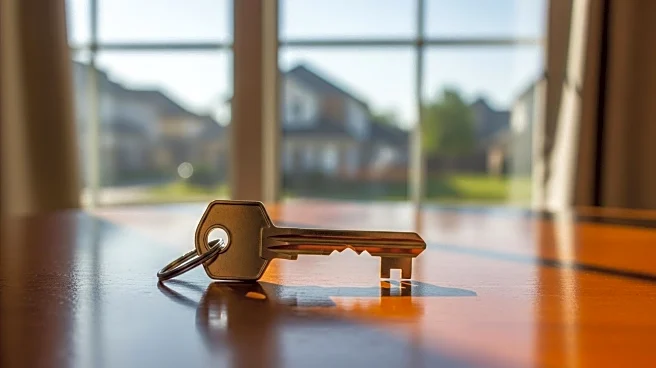What's Happening?
The U.S. housing market is experiencing a significant downturn, with sales of previously occupied homes running about 1.3% below the same period last year. This slump has led many sellers to lower their asking prices or consider alternative options such as renting. The average rate on a 30-year mortgage is expected to remain near the mid-6% range this year, which may not significantly boost refinancing activity. Sellers are facing increased pressure due to a shortage of homebuyers, and in some regions, particularly in the South and West, they are more likely to offer better deals to attract buyers. Despite a slight rise in the national median home listing price, some metro areas have seen declines, indicating a shift in the power dynamic between buyers and sellers.
Why It's Important?
The ongoing slump in the housing market has broad implications for the U.S. economy. A decrease in home sales can affect related industries such as construction, real estate services, and home improvement. Sellers are losing leverage, which could lead to a more balanced market but also signals potential economic challenges. The shortage of buyers is partly due to high mortgage rates and economic uncertainty, which could continue to suppress demand. This situation may lead to further price reductions and impact the financial stability of homeowners and real estate investors.
What's Next?
Economists expect mortgage rates to remain stable, which may not significantly alter the current market dynamics. Sellers may continue to lower prices or withdraw listings if they can afford to wait for better conditions. The Trump administration's push for lower interest rates could influence the market, but the impact on mortgage rates remains uncertain. The housing market's recovery will depend on economic factors and potential policy changes that could stimulate buyer interest.













